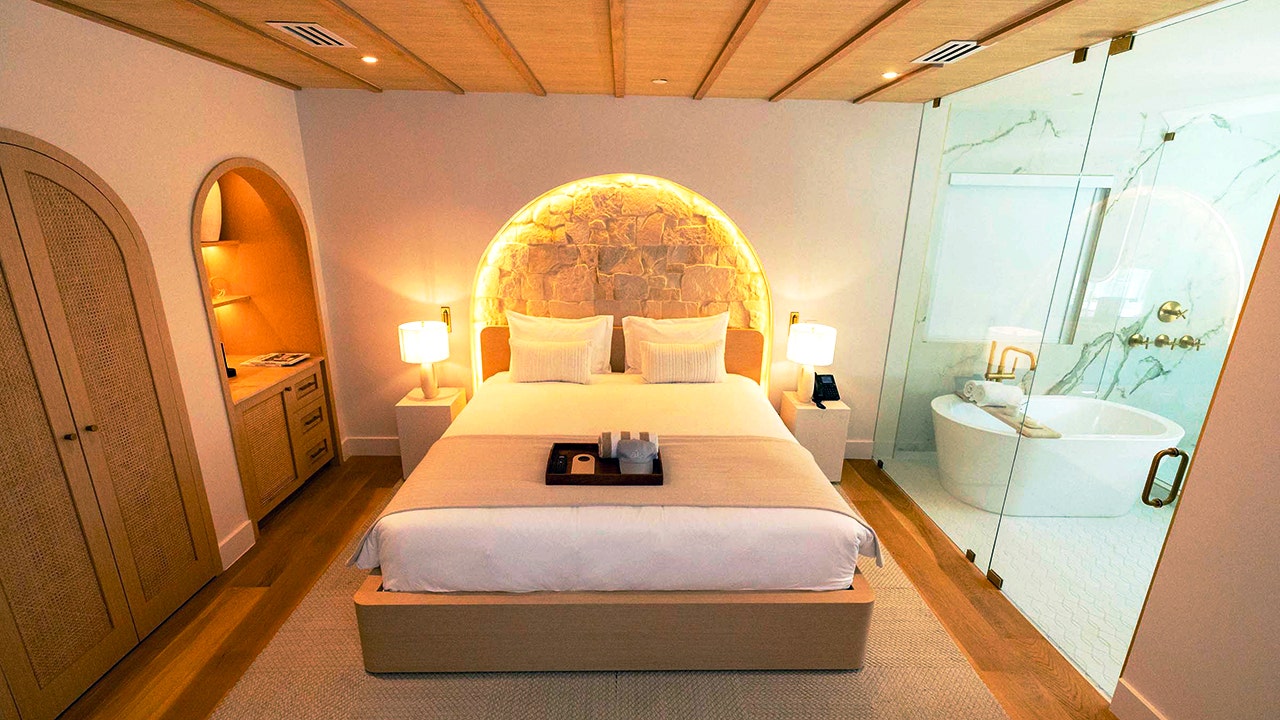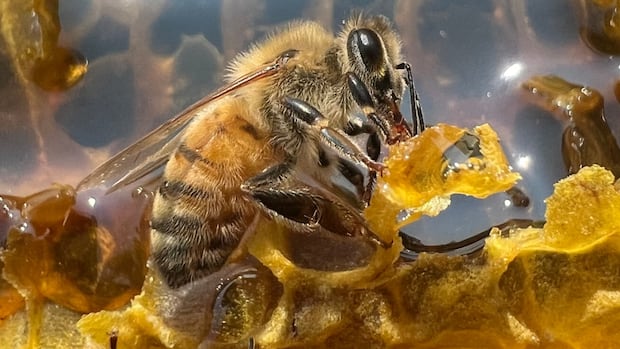A million mice are eating seabirds alive on a remote island. Conservationists have a plan

The Current15:00How to kill one million mice
Warning: This story contains distressing images.
Conservationists are hatching a plan to kill up to one million mice on the remote South Africa island of Marion, over fears that the invasive rodents could wipe out the seabirds that live there.
“They’re essentially eating them alive,” said Anton Wolfaardt, a conservation scientist in Cape Town and manager of the Mouse-Free Marion project (MFM). “[The birds] just sit there while swarms of mice often will kind of nibble away at them.”
The project aims to drop bait laced with rodent poison all over the island, in a bid to eradicate every single mouse. Wolfaardt said the stakes of not intervening are high.
“[We] predict that the majority of the seabirds on Marion Island, including the wandering albatross, will become locally extinct in the next 30 to 100 years if the mice are not removed,” he told The Current’s Matt Galloway.
WATCH | Aerial views of Marion Island:
Marion is a windswept volcanic island in the Indian Ocean, about 2,000 kilometres southeast of Cape Town. The island is designated as a special nature reserve, with Wolfaardt describing it as a “haven” for the albatrosses, petrels, penguins and seals that hunt on the subantarctic waves but come ashore to breed and moult.
Mice first hitched a ride to Marion on seal-hunting boats about 200 years ago, but in recent decades their population has ballooned up to a million rodents at high season. Wolfaardt said that spike is driven by climate change; warmer and drier conditions extended the mice’s breeding window.
The mice have learned to attack where a bird’s plumage is thinnest, usually at the head, to more easily reach the soft tissue. Photographs taken on Marion show birds with bloodied wounds on their heads and necks, sometimes with mice nibbling away at the live bird, in behaviour that scientists have called scalping.
Wolfaardt explained that the island’s birds have not developed defence strategies for these relatively new predators, and younger chicks can’t yet fly away.
“Eventually the birds become so fatigued that they will eventually die, or will die due to some kind of bacterial infection,” he said.
Helicopters criss-cross with poison
The Marion project will involve a fleet of helicopters dropping poison along precise, overlapping routes across the island. This approach has worked in eradication programs on smaller islands, but Wolfaardt said “the size and the topographic complexity” of Marion presents unique challenges.
That complexity means the plan likely won’t be ready to go until 2027. Wolfaardt said the team is studying extensive data and making contingency plans around variables like the weather — but noted there is zero margin for error.
“[We need] to make sure that every single square inch of the island … has the rodenticide bait distributed across it, so that we ensure that every mouse … consumes a lethal dose,” he said.
The birds would get temporary respite if most but not all of the mice are eradicated, he noted. But that could be short-lived: mice can have four or five litters a year, with six to eight babies per litter.
The project is a partnership between BirdLife South Africa, a conservation non-profit, and the South African government. The estimated cost is $26 million US, provided through a mix of government support and a fundraising campaign.
WATCH | Mouse attacks petrel chick (Viewer discretion advised):
Wolfaardt said the project’s risk assessment suggests some individual birds or animals may inadvertently ingest the poison, perhaps through eating the mice carcasses. But he stressed that seabirds feed at sea and will be largely uninterested in the grain used as bait.
“We’re confident that … the net benefit is substantially positive,” he said.
Finding a ‘sweet spot’
Ecologist Ted Grosholz thinks the fact that the mice are contained on the island gives the project a good chance at success, and the potentially “catastrophic loss” to seabirds justifies the plan.
But he warned that achieving total eradication can be difficult.
“Trying to eradicate the final, last few individuals — in this case the last few mice on the island — can be very expensive and time-consuming,” said Grosholz, a professor at the University of California, Davis.
Grosholz and Stephanie Green, an associate professor at the University of Alberta, have worked together on how best to manage invasive species — particularly in oceans and waterways where the eggs and larvae of marine life can quickly spread over long distances.
In March 2021, they published a study into what they called “functional eradication” in the journal Frontiers in Ecology and the Environment.
“Functional eradication is recognizing that in these large interconnected systems, that we might not be able to completely remove every single individual of the population,” said Green.
“But we might be able to identify a sweet spot, sort of a tipping point where we can keep an invader suppressed below where it’s not having [a] substantial impact on the ecosystem.”
Green explained that there are some environments where eradication makes sense, such as an isolated island where the species cannot quickly or easily return. But in other environments, focusing on suppression can allow conservation efforts to be spread over a wider area.
The hydra effect
Green said keeping the population of a species in check can also guard against the hydra effect, where a species rebounds after an intervention. The phenomenon is named after the many-headed monster from ancient Greek mythology, which regrew two new heads for every one that was cut off.
In 2009, Grosholz led a study to see if it was feasible to eradicate another invasive species, European green crabs, from an isolated lagoon in California.

The crabs have plagued North American waters for decades, feasting on clams and mussels and costing the commercial shellfish industry millions of dollars every year. U.S. organizations have experimented with harvesting the crabs for fertilizer, food for human consumption, or even turning them into whiskey. But officials have largely struggled to tackle the species, which has no natural predators, breeds prolifically, and is spreading further north into Canadian waters as temperatures warm.
Over five years, Grosholz and his team trapped and destroyed about 90 per cent of the crabs in the lagoon — reducing their numbers from around 100,000 to just under 10,000.
“Unfortunately, the next year we were back up to well over 200,000, close to 300,000 crabs,” Grosholz told The Current.
The team had not accounted for the fact that adult green crabs eat the young — a form of population control when a single female can release up to 185,000 eggs up to twice a year.
“By removing almost all of the adult crabs, we allowed the next generation to survive at high levels, which resulted in the enormous increase in the population,” he explained.
A cautionary tale of cats
Back in Cape Town, Wolfaardt pointed to a previous eradication program on Marion Island.
Scientists brought five cats to the island in the 1940s, to deal with the mice at their research station. Those unneutered cats quickly multiplied and began feeding on the seabirds.

By the 1970s, around 2,000 cats were killing an estimated 450,000 seabirds every single year.
It took the South African government until the 1990s to eradicate the island’s feral cats.
“Our project is very much following in the footsteps of that, to remove the last introduced predator from the island and to restore it to being the safe haven that it deserves to be,” Wolfaardt said.




